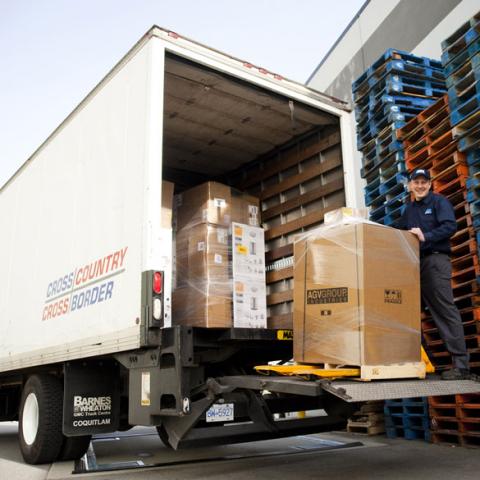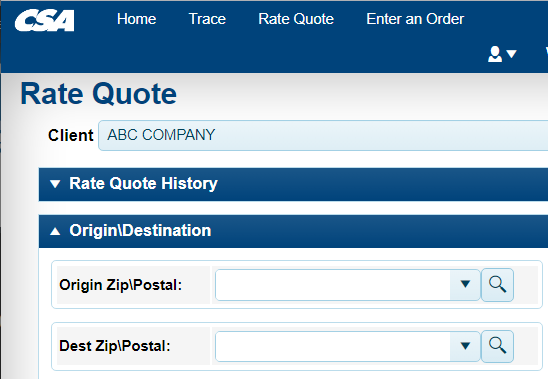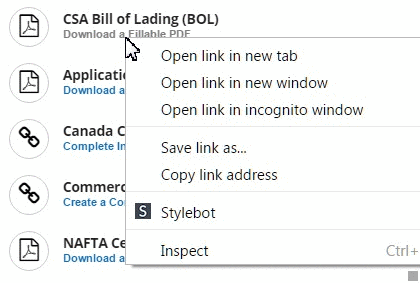Consignee vs Consignor: Key Differences When Shipping Freight
Every freight transaction involves multiple parties but the two most often confused terms are the: consignee and consignor. Whether you are a consignor or consignee, the freight shipping process and associated terminologies can be perplexing. In order to ensure nothing goes wrong, it’s important to not only understand the freight process but also the roles and responsibilities of each party.
If a sender ships a product to a receiver via a delivery service, the sender is the consignor (also referred to as the "shipper", to keep things less confusing many companies will use the term shipper instead of consignor, including CSA), the recipient is the consignee, and the deliverer is the carrier.
In this guide, we'll go over the consignee definition, as well as how it is different from a consignor (shipper) when shipping freight. We'll also take a look at Bill of Lading (BOL) and the role it plays in consignments.
Consignee Meaning
What's the definition of consignee? Simply put, they are the recipients of the products being shipped. In most cases, you can think of them as a customer or client.
Often, a consignee is the ultimate owner of the product. They could be an individual or a company. They could also be the agent nominated by the buyer or even the buyer’s bank.
Unless otherwise instructed, the party listed as the ‘consignee’ on the Bill of Lading is legally required to be physically present to collect the shipment. When shipping internationally, the consignee is the importer of record.
It is important to keep in mind that shipments destined for a third party logistics (3PL) company wouldn’t list the 3PL as the consignee. That’s because the consignee is the real owner of the product who has actually paid for it.
Consignor (shipper) Meaning
A consignor (shipper) is the party that ships the product. They can be a factory, a distribution center, or anyone really that has entered into a contract to ship goods. Typically, the ownership (title) of the goods remains with the consignor until the consignee pays for them in full. The consignor is the exporter of record when shipping internationally.
What is a Bill of Lading?
The consignor (shipper) sends the goods to a freight carrier for shipping it to the consignee. However, the ownership of the freight doesn’t legally change until the recipient of the goods signs the bill of lading (BOL).
A BOL is the document required in the shipment process that involves all parties: the consignor (shipper), consignee, and carrier. It includes all the relevant details necessary to ship the product and invoice the transaction correctly once the transaction is completed.
A BOL is the legal document which serves as evidence of a contract between the consignor and the carrier. It plays three other important roles:
- It acts as a receipt to show that products were loaded and the freight service was provided.
- It provides details of the products that are being shipped. For this reason, the driver and carrier should have it with them at all times during shipping.
- It proves ownership of products where products can be transferred to the carrier and, in turn, transferred to the final consignee.
The BOL should accompany the goods in every phase of the shipment. It must be signed by authorized parties from the consignor and carrier. The carrier receives the BOL during collection, then once the goods are delivered, it is handed to the consignee.
A BOL usually includes the following:
- General info on both the consignor and consignee such as their names, name of the carrier, etc.
- Quantities (number of boxes/packages) and type of packaging, such as cartons, pallets, drums, etc.
- Specifications of every product such as unit numbers, weight or volume, and materials used
- Any special handling instructions for particular products
- Info on any hazardous (or oversized) products
- Rate for the freight and total amount
- Date of collection
- Purchase order or special reference number for tracking purposes
- Terms of payment
Usually, three copies of BOL are issued: one for the consignor, one for the consignee, and one kept for the bank. When any one of these copies is submitted, allowing the products to be released, the other two copies are considered invalid. A submitted BOL specifies that products were dispatched to the final destination.
CSA Transportation’s Role & Responsibility
It wouldn’t be wrong to say that freight shipping is the lifeblood of commerce. However, companies often need unique solutions for transporting freight in a non-standard or accelerated manner.
At CSA Transportation, we’ve been moving supply chains since 1986. For decades, we have successfully provided LTL freight shipping to the agriculture, mining, and construction industries.
Our in-house customs coordinators work with your broker to help ensure smooth on-time delivery of your freight to the final destination. Our tracking portal gives you the tools you need to search your shipments fast and send your customer a status update easily from the online menu.
Whether you need trucking or logistics for shipments of any size, we have the experience and expertise to back up our promise. You can trust CSA Transportation to offer delivery services that best suit the shipping needs of your business. And we’re experts in shipping to and from the US and Canada.
Learn more about our services by getting in touch today to request your free quote.






